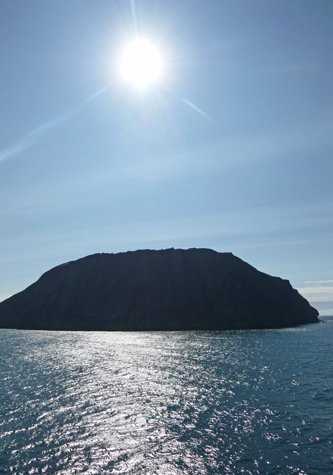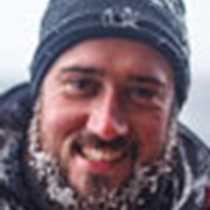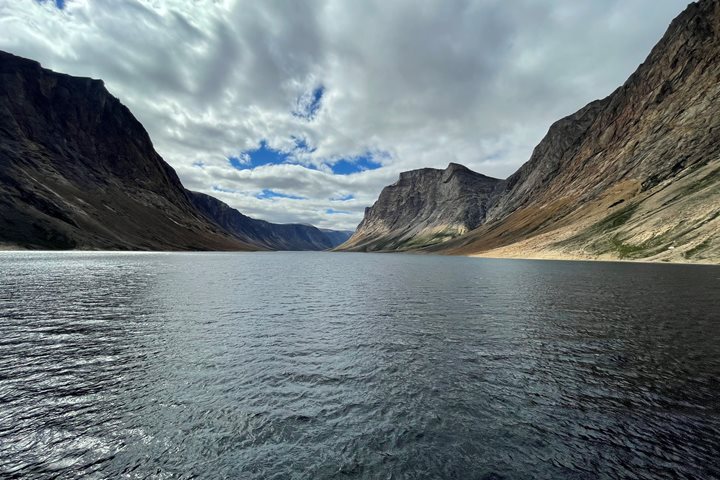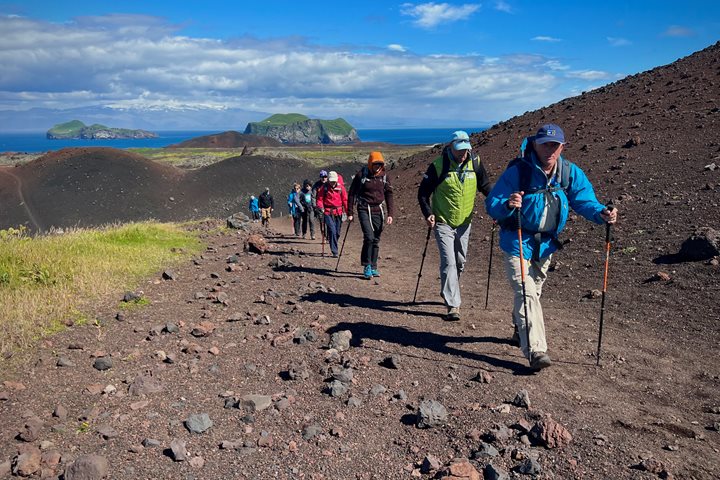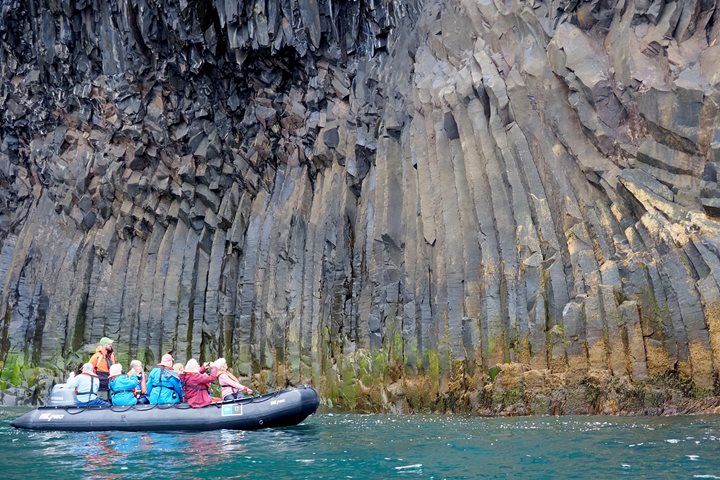The waters surrounding the Westmann islands are rich in marine life, and throughout our time in the area we were surrounded by numerous feeding seabirds, along with the occasional minke whale. As we followed our route from Surtsey to Heimaey, we were met by the most iconic of Icelandic cetaceans—a pod of killer whales. This small group of fish-eaters hunted around the ship, rushing through the water off of our bow.
A local pilot joined the ship at the mouth of the harbor in Heimaey. The passage into the harbor, though short, is extremely narrow and walled with steep, high cliffs. On our port side as we enter we see where flowing lava began to encroach on the harbor following the 1973 eruption of Eldfell, the volcanic cone which looms up threateningly behind the town. This eruption threatened to wipe out the harbor and with it the livelihood of its inhabitants, but their heroic efforts kept the lava at bay. Through visiting the town and climbing up to the top of Eldfell we learned about how, despite widespread destruction of homes and loss of property, the efforts of the locals in fighting the lava and saving their harbor were overall seen as a great victory. Our experiences of great weather, nature, and human history made this a perfect end to a truly wonderful trip.

